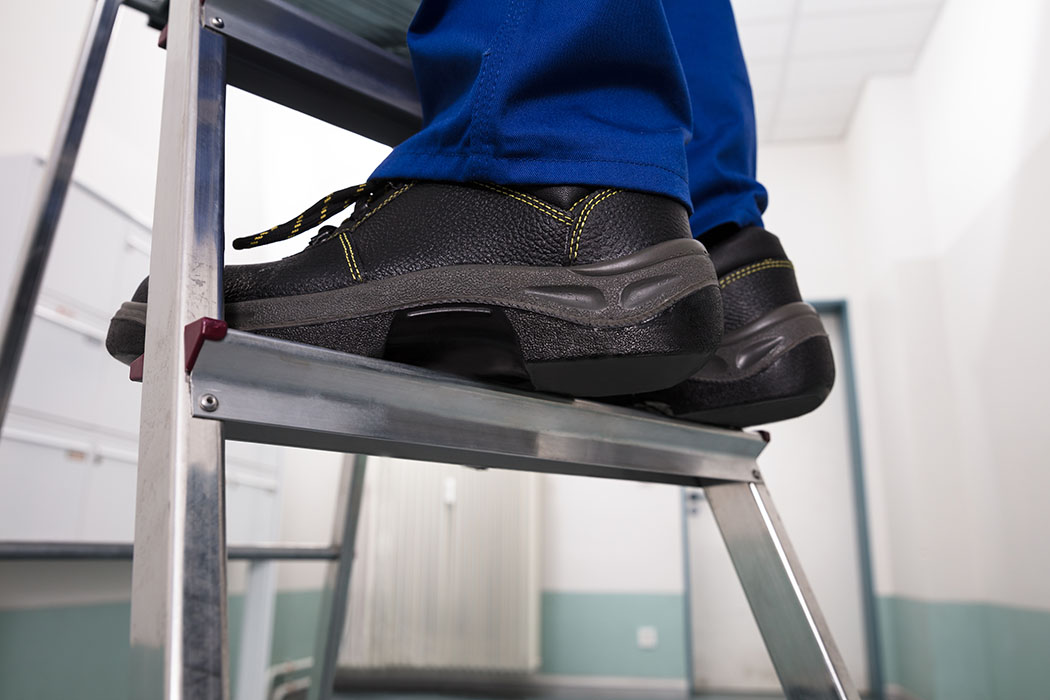For the school year 2018-2019, Southwest Washington Workers Compensation Trust had some serious employee injuries resulting from falls from a ladder. All of these injuries happened when the worker was descending the ladder. Washington has workplace safety rules that apply to the use of portable ladders. Please practice them and ensure your workers are using ladders properly.
Ladder inspections
- Inspect the ladder before each use for cracks or broken rungs/steps.
- Defective ladders should be marked as defective and removed from service.
How to setup a ladder
- Assure that the ladder is placed on a firm and level foundation.
- When setting up a straight ladder, place the base one foot away from the wall for every four feet of height. The greater the deviation from this ratio, the more likely the ladder will slip at its base.
- When using a ladder to access an upper landing, the ladder must be secured at the top and bottom of ladder.
- Do not place ladders in traffic areas, passageways, or in front of doorways. If you need to work on a ladder in a doorway, lock the door or prop it open so no one will open the door and knock you over.
- Straight ladders must extend at least 3 feet above the upper landing surface.
- Make sure stepladders are fully opened with the spreaders locked.
How to properly use a ladder
- Wear shoes that have non slip soles and place both feet firmly on the ladder rungs or steps.
- When descending or ascending a ladder, face the ladder.
- Always keep your body centered between the rails and never lean to the side.
- Do not stand above the highest safe standing level.
- Do not stand above the second step from the top of a stepladder and the 4th rung from the top of an extension ladder. A person standing higher may lose their balance and fall.
- Do not climb a closed stepladder.
- Maintain a three-point contact when climbing a ladder. That means two hands and one foot or two feet and one hand are in contact with the ladder at all times.
- Do not exceed the rated load capacity of the ladder. The load includes the weight of the person and any equipment, tools and materials applied to the ladder.
- Do not climb on the rear braces or stand or step on the two top steps of the stepladder.
- Never carry heavy, bulky or awkward objects that make travel on a ladder difficult. Raise and lower heavy loads with a hand line or hoist. Small items such as hammers, pliers, measuring tapes, nails, paint brushes, and similar items should be carried in pouches, holsters, or belt loops.
Please make sure to train and re-train your employees in appropriate and safe use of ladders on a regular basis.




 ESD 112 equalizes educational opportunities for learning communities through innovative partnerships, responsive leadership, and exceptional programs.
ESD 112 equalizes educational opportunities for learning communities through innovative partnerships, responsive leadership, and exceptional programs.